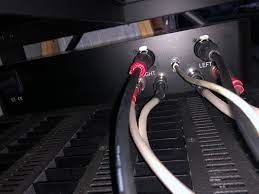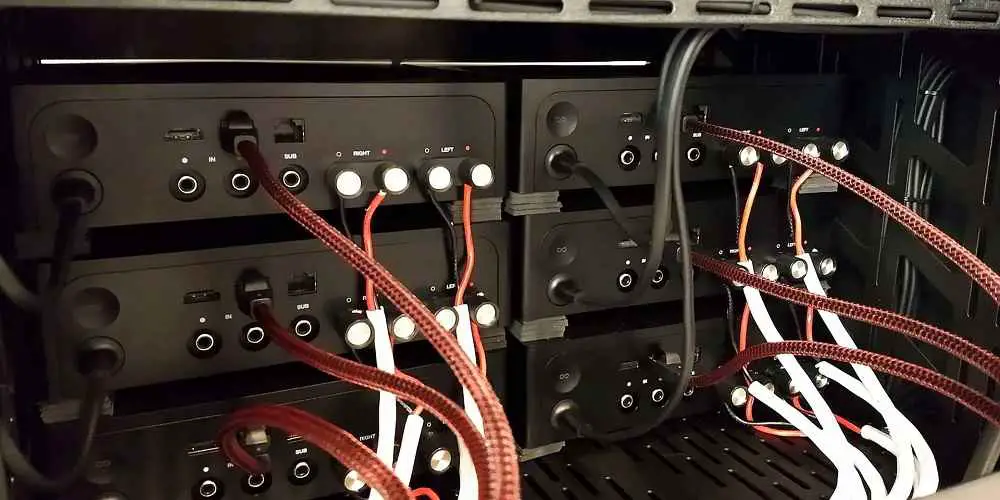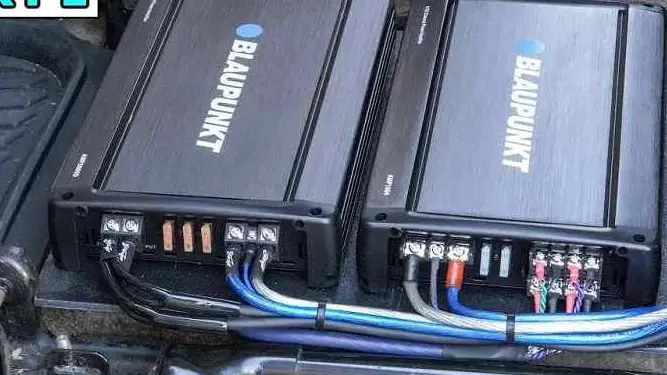Connecting two amplifiers together can bring a whole new level of power and sound quality to your audio system.
Whether you’re looking to increase the volume of your home theater or add more depth to your music, connecting two amplifiers can be a great way to achieve your desired results.

In this article, we will discuss the benefits of connecting two amplifiers, the different types of connections available, and provide a step-by-step guide for connecting your amplifiers.
The Benefits of Connecting Two Amplifiers
There are several benefits to connecting two amplifiers together, including:
Increased power output:
By connecting two amplifiers together, you can double the amount of power available to your speakers.
This can lead to a significant increase in volume, allowing you to enjoy your music or movies at higher levels.
Improved sound quality:
Connecting two amplifiers can also lead to improved sound quality.
This is because each amplifier can be optimized for a specific frequency range, allowing for a more balanced and detailed sound.
Greater flexibility in system setup:
Connecting two amplifiers also gives you more flexibility in terms of system setup.
You can use one amplifier for the main speakers and another for the surround speakers, for example, or use one amplifier for the left channel and another for the right channel.
Types of Amplifier Connections
There are several different ways to connect two amplifiers together, each with their own advantages and disadvantages. The most common types of connections include:
Series connection:
In a series connection, the output of one amplifier is connected to the input of the other.
This can lead to increased power output, but can also result in reduced sound quality due to increased distortion.
Parallel connection:
In a parallel connection, the inputs of the two amplifiers are connected together and the outputs are connected together.
This can lead to improved sound quality, but can also result in reduced power output.
Bridged connection:
In a bridged connection, the two amplifiers are connected in such a way that they work together to drive a single speaker.
This can lead to increased power output, but can also result in reduced sound quality due to increased distortion.
It’s important to note that each type of connection has its own set of advantages and disadvantages, and the best choice will depend on your specific needs and the equipment you have available.

Step-by-Step Guide for Connecting Amplifiers
Before beginning the process of connecting your amplifiers, it’s important to take a few safety precautions to ensure that you don’t damage your equipment or harm yourself.
Safety Precautions:
- Be sure to disconnect any power sources from the amplifiers before making any connections.
- Make sure that your amplifiers are properly grounded to prevent any electrical shocks.
- Use caution when working with any electrical equipment to avoid any injuries.
Tools and Equipment Needed:
- Amplifiers
- Speaker wire
- RCA cables (if necessary)
- Screwdrivers
- Electrical tape
Now that you have taken the necessary safety precautions, you can begin the process of connecting your amplifiers.
Series Connection:
- Disconnect power from both amplifiers.
- Connect the output of one amplifier to the input of the other using an RCA cable.
- Connect the speakers to the output of the second amplifier.
- Reconnect power to both amplifiers.
- Adjust the gain on both amplifiers to match.
- Power on both amplifiers and test for any distortion.
Parallel Connection:
- Disconnect power from both amplifiers.
- Connect the positive terminals of the speakers to the positive terminals of both amplifiers.
- Connect the negative terminals of the speakers to the negative terminals of both amplifiers.
- Reconnect power to both amplifiers.
- Adjust the gain on both amplifiers to match.
- Power on both amplifiers and test for any distortion.
Bridged Connection:
- Disconnect power from both amplifiers.
- Connect the positive terminal of the speaker to the positive terminal of one amplifier.
- Connect the negative terminal of the speaker to the negative terminal of the other amplifier.
- Connect the positive terminal of the other amplifier to the negative terminal of the first amplifier.
- Reconnect power to both amplifiers.
- Adjust the gain on both amplifiers to match.
- Power on both amplifiers and test for any distortion.
Troubleshooting Tips
- Common issues that may arise when connecting amplifiers include distortion, low volume, and humming.
- To resolve distortion, check the gain settings on both amplifiers and make sure they are matched.
- To resolve low volume, check the connections to make sure they are secure and check the gain settings to make sure they are not too low.
- To resolve humming, check for any ground loops and make sure that the amplifiers are properly grounded.

Conclusion
Connecting two amplifiers together can bring a whole new level of power and sound quality to your audio system.
By understanding the different types of connections available and following the step-by-step guide provided in this article, you can connect your amplifiers with confidence.
Remember to take the necessary safety precautions and to troubleshoot any issues that may arise.
Can I connect any two amplifiers together?
Not necessarily. It is important to make sure that the amplifiers are compatible and can be connected together safely.
Check the specifications and power ratings of your amplifiers before making any connections.
Will connecting two amplifiers cause any damage to my speakers?
No, as long as the amplifiers are properly configured and the power output is matched to the speakers’ specifications, connecting two amplifiers should not cause any damage to your speakers.
What is the difference between a series and parallel connection?
A series connection involves connecting the output of one amplifier to the input of the other, while a parallel connection involves connecting the inputs and outputs of both amplifiers together.
A series connection can increase power output but can also result in increased distortion, while a parallel connection can improve sound quality but can also result in reduced power output.
Can I use different types of amplifiers for connecting?
Yes, you can use different types of amplifiers for connecting as long as they are compatible and have the same power rating.
But it’s always recommended to use the same type of amplifier and similar power rating for connecting them.
Is it necessary to match the gain of both amplifiers when connecting them?
Yes, it is important to match the gain settings of both amplifiers to ensure that the sound is balanced and to prevent distortion.
This can be done by adjusting the gain on the amplifiers or by using an external gain matching device.
